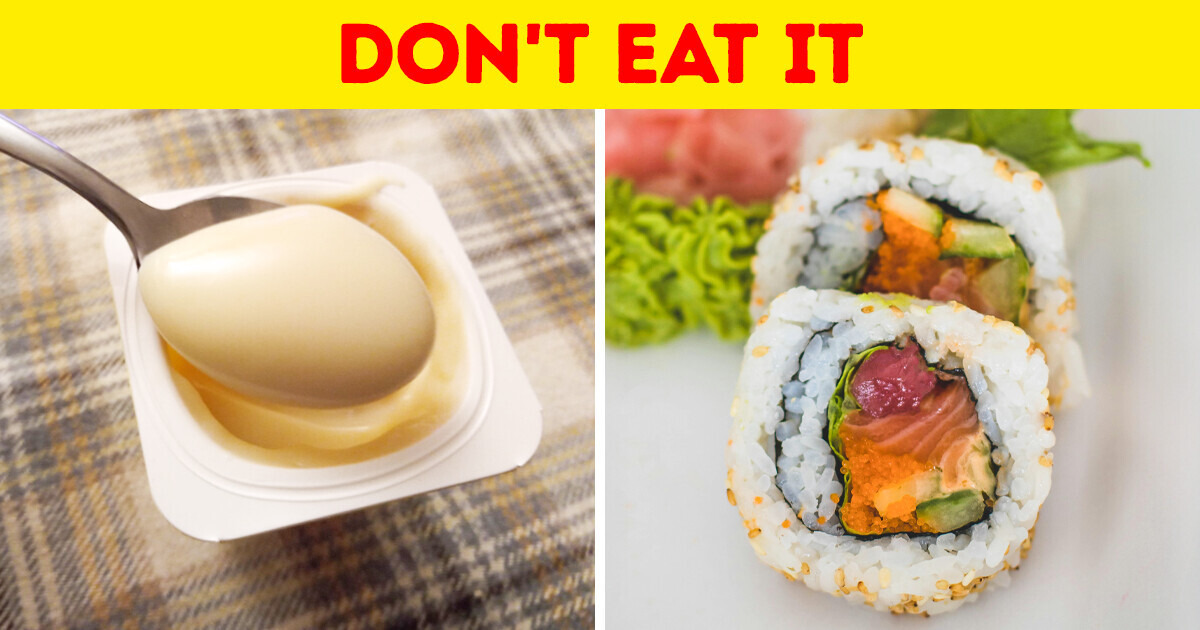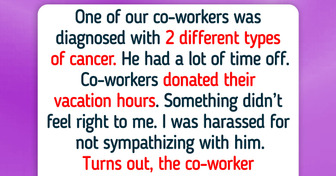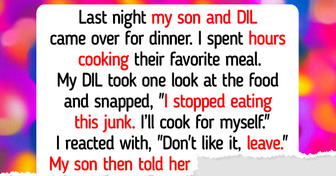I Pretended to Hate My Stepmom’s Gift So My Real Mom Wouldn’t Feel Useless


A healthy diet means at least 400 grams of fruits and vegetables per day, without including starchy vegetables like potatoes. However, large corporations often advertise certain food items as healthy and risk-free, when in reality they are filled with sugar. Are you ready to find out whether you've been eating any of these supposedly healthy foods?
Many people opt for multi-grain or seven-grain breads, believing they're more nutritious. However, the truth is that most of these breads still list unbleached enriched wheat flour as the primary ingredient. While they may contain some whole grains, they are often secondary to the processed flour.
A smarter choice is to steer clear of breads with “enriched” as the first ingredient. This term indicates that the grains were stripped of their nutrients during processing and then had some added back in. Instead, look for breads that list whole grains, such as whole wheat, as the main ingredient.
Yogurt has earned its reputation as a health food due to its natural probiotic content, which supports gut health. However, not all yogurts are beneficial, and frozen yogurt is often quite similar to ice cream. It’s not only packed with sugar, but also typically topped with unhealthy additions like crushed Oreos or gummy bears. Yogurt-covered snacks like pretzels, raisins, and peanuts can also be sugar traps.
Flavored yogurts, especially those marketed to children, tend to be loaded with excessive sugar.
A healthier option: Opt for plain low-fat Greek yogurt and enhance its flavor with fresh fruits like berries and bananas.
Many energy bars are essentially just as high in sugar, calories, and fat as a regular candy bar—particularly those coated in chocolate. While they may seem healthy due to ingredients like brown rice syrup and added fiber, they’re really just a convenient way to consume extra calories.
Pick bars that feature straightforward, recognizable ingredients, such as a mix of nuts, seeds, and a small amount of honey to bind them together. If you're aiming to reduce your calorie intake, it might be worth considering an alternative, as all energy bars tend to be calorie-dense.
Dried fruit is packed with nutrients. A single piece of dried fruit contains nearly the same amount of nutrients as its fresh counterpart but in a much more concentrated form. However, there are exceptions. For instance, the vitamin C content is greatly diminished when the fruit is dried.
Fruits naturally contain high amounts of sugars. When dried, the removal of water leads to a concentration of sugar and calories in a smaller, more compact form. This means that dried fruit is much higher in calories and sugar, including both glucose and fructose. Because dried fruit is sweet and calorie-dense, it's easy to consume large portions, leading to excessive sugar and calorie intake.
Some dried fruits are coated in added sugar or syrup to enhance their sweetness and appeal. Such dried fruits with added sugar are often called "candied" fruit. Repeated studies have shown that added sugar has detrimental effects on health, raising the risk of obesity, heart disease, and even cancer.
Even if you eat sugar-free dried fruits, it doesn’t mean that you should eat unlimited amounts. Too many dried fruits on a daily basis can end up in excessive sebum production. That can clog up your pores and therefore increase your chances of getting acne significantly.
Whether you're adding granola to your yogurt or enjoying a granola bar, most granola products are packed with sugar and fat. While they begin with healthy ingredients like rolled oats, dried fruits, nuts, and seeds, manufacturers often coat them in sweeteners such as sugar, molasses, honey, or corn syrup, and bake them in oil.
Opt for muesli! Muesli contains all the nutritious ingredients of granola without the added sugar and oil. Some types include only nuts, seeds, rolled oats, spices, and dried fruits. You can also make your own granola or granola bars at home, using minimal sweeteners and oils.
Muffins are often seen as unhealthy, but the addition of the word "bran" tends to make us think otherwise. Bran is known for its high fiber content, minimal processing, and digestive benefits, among other advantages. However, it's usually not the bran that's the problem in muffins; it's the excessive amounts of sugar and canola oil.
In fact, the nutritional label on a muffin (even a bran muffin) can show 400 to 500 calories, and over 40 grams of sugar, and reveal that a muffin is often less healthy than a chocolate chip cookie.
We’re not referring to carrots and celery! We mean those bags of fried or baked snacks—crunchy sticks made from corn starch and potato starch, with a sprinkle of spinach or beet powder for color. Those don’t actually qualify as vegetables. Instead, opt for a platter of genuine vegetable sticks, such as cucumbers, peppers, and carrots.
Water is crucial for life, and so are vitamins. However, when they’re mixed in a bottle with food coloring and sugar, it becomes an unnecessary product. Instead, stick to plain water or enhance it with citrus or mint. You can get all the vitamins you need from your diet, or take a multivitamin if recommended (and they contain no sugar!).
During the low-fat era, pretzels were considered a top snack choice. However, we've since learned that their refined flour and high salt content can be just as harmful to heart health as fatty foods, which is why pretzels are now categorized as junk food. Instead, try snacking on air-popped popcorn.
Oats are a healthy whole grain, but that changes when your bowl is filled with three teaspoons of sugar. Avoid the maple or brown sugar-flavored packets. Instead, prepare your own plain oatmeal and add grated apple, coconut, mashed banana, or fresh berries for flavor.
Many people enjoy a cup of coffee to start their day, but the pre-ground coffee we use may not be as pure as it seems. It’s often blended with various ground materials that resemble coffee, making it hard to tell the difference.
Additionally, some brands have been found to contain harmful substances such as Ochratoxin A, Acrylamide, Polycyclic Aromatic Hydrocarbons, Yeast, and Pesticides. To avoid these risks, it’s best to opt for whole-bean coffee or purchase pre-ground coffee from reliable sources.
The seemingly healthy and refreshing tea from tea bags may actually be releasing microplastics into your body. In addition to plastic fibers, a chemical called epichlorohydrin is used in the bags to prevent them from tearing. Instead of consuming tea that may contain these tiny plastics, consider switching to loose-leaf tea. You can brew it and strain it properly before drinking.
The next time you're in the mood for a healthy sushi meal, consider this: nearly 74% of sushi sold in US sushi venues is incorrectly labeled. Many times, you're tricked into paying more for lower-quality substitutes. For instance, the wild salmon you believe you're eating is probably farmed.
Another thing to watch for is counterfeit tuna. White tuna is frequently replaced with Escolar, a fish that can cause digestive issues.
It turns out that there are many kinds of cinnamon. One variety is Ceylon cinnamon, while Cassia is another one. The difference between these two is that the latter contains a chemical known as coumarin, which is also used in rat poison. To distinguish between the two, check the packaging labels. You can also identify Ceylon cinnamon by its tan-brown hue and light, flaky texture.
But why is coumarin potentially harmful? It is widely used as a fragrance component that has been extensively studied. European Union scientific organizations have recognized it as a possible skin sensitizer, meaning it could trigger skin reactions, such as redness, bumps, or itching.
Many people enjoy using coffee pods, but plastic coffee pods may present significant health risks. When the pods are heated, chemicals that can disrupt hormones over time may leach into the coffee. Additionally, some pods contain furan, a harmful compound that can impact your digestive system and liver. For these reasons, it’s advisable to avoid plastic pods or reduce your coffee intake.
What do flies do when they land on your food? Do they spit on it, leave dirt, or simply smell it? We are sure this has happened to you before. Now, you can find out what happens and whether you can eat your food afterward.











